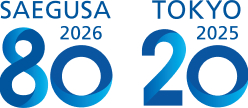New Rule Regarding a Claim Containing a Reference to Another Claim
2022.03

© filo/iStock
In Japan, a claim that refers back in the alternative to more than one other claim (i.e., a claim containing a reference to multiple claims) is available without paying any extra fees(1). In this context, although the Japan Patent Office (JPO) does not appear to use the term “dependent claim,”(2) and the definition of a “dependent claim” varies from country to country, the above appears to be the case for anything falling within the definition of a dependent claim in any jurisdiction; however, the above is not limited thereto (this will be discussed in detail later). What is more, under the current rule, similar to the EPO, such a claim containing a reference to multiple claims may serve as the basis for any other claim containing a reference to multiple claims. However, as of April 1, 2022, this will change.
New Rule Regarding Claims Containing a Reference to Another Claim
The JPO’s new rule states that a claim containing a reference to multiple claims may not serve as the basis for any other claim containing a reference to multiple claims, either directly or indirectly. This new rule will be applicable to any patent applications filed on or after April 1, 2022 (including a national phase entry of a PCT application having an international filling date on or after this date).
Thus, in Case I below, because Claim 4 directly refers to Claim 3 (both claims contain a reference to multiple claims), Claim 4 is improper under the new rule.
Case I.
Claim 1. A composition comprising A.
Claim 2. The composition according to claim 1, further comprising B.
Claim 3. The composition according to claim 1 or 2, further comprising C.
Claim 4. The composition according to any one of claims 1 to 3, further comprising D.
In Case II below, because Claim 7 indirectly refers to Claim 4 (both claims contain a reference to multiple claims), Claim 7 is improper under the new rule.
Case II.
Claim 1. An apparatus . . .
Claim 2. The apparatus according to claim 1, . . .
Claim 3. The apparatus according to claim 1 or 2, . . .
Claim 4. The apparatus according to any one of claims 1 to 3, further comprising E.
Claim 5. The apparatus according to claim 4, wherein E is e1.
Claim 6. The apparatus according to claim 4, wherein E is e2.
Claim 7. The apparatus according to claim 5 or 6, further comprising F.
The Scope of the New Rule
Any claim referring back in the alternative to more than one other claim (i.e., a base claim) falls under the scope of this new rule. Furthermore, the scope thereof may be unexpectedly broad, since the JPO does not appear to restrict the rule to so-called “dependent claims,” unlike the USPTO and CNIPA (China). Specifically, all of the following Types A and B fall under the new rule.
Type A: The base and subsequent claims are in the same categories
– Type A-1: The subsequent claim restricts the subject matter of the base claim (see Cases I and II above)
Note: This type is considered a dependent claim in all major jurisdictions.
– Type A-2: The base and subsequent claims are directed to one part and the other co-operating part or the whole, respectively, etc. (see Case III below)
Note: This type is not considered a dependent claim before the EPO and CNIPA.
Type B: The base and subsequent claims are in different categories (see Case IV below)
Note: This type is not considered a dependent claim before the EPO and CNIPA.
Therefore, in Case III, even though Claims 3 and 4 are directed to one part and the whole, respectively, Claim 4 is improper under the new rule.
Case III.
Claim 1. A composition . . .
Claim 2. The composition according to claim 1, . . .
Claim 3. The composition according to claim 1 or 2, further comprising G.
Claim 4. A multilayer film comprising a layer formed with the composition according to any one of claims 1 to 3.
Moreover, in Case IV, even though Claims 3 and 4 are in different categories, Claim 4 is improper under the new rule.
Case IV.
Claim 1. A process . . .
Claim 2. The process according to claim 1, . . .
Claim 3. The process according to claim 1 or 2, further comprising step H.
Claim 4. An apparatus for carrying out the process according to any one of claims 1 to 3.
The Outcome of Non-Compliance with the New Rule
If any one of the claims is found to not comply with the new rule during the examination of the application, an Office Action (OA) notifying a formality rejection will be issued. Such a claim, as well as any claims referring thereto, will not be examined unless this deficiency is rectified. Non-compliance with this new rule is neither a ground of opposition nor invalidation.
Our Proposals
If your patent application includes such an improper claim containing a reference to multiple claims as discussed in this article, and you would like particular subject matter in either the improper claim or any claims referring thereto to be examined, we generally suggest rectifying the deficiency by way of amendment before the first OA is issued.
*(1) – In Japan, unlike in the US, a claim may refer in the alternative to multiple sets of claims.
*(2) –The English version of the revised Examination Guidelines of the JPO refers to “a multiple dependent-form claim”; however, the meaning of the original Japanese text is “a claim referring to multiple claims.”


